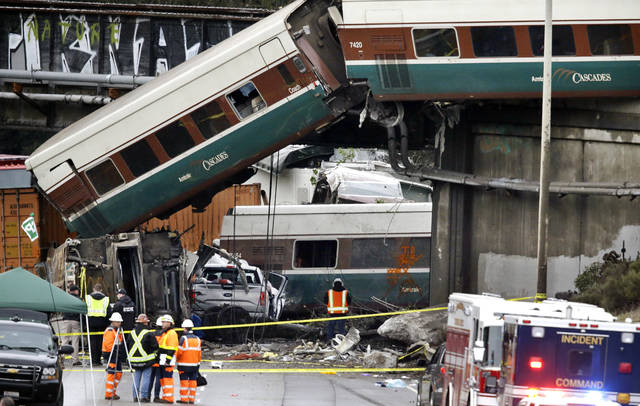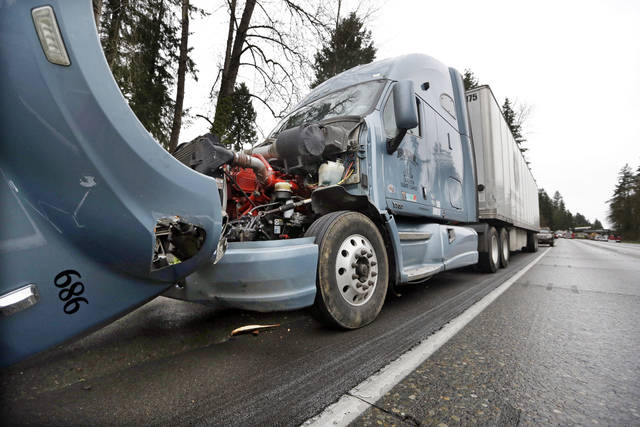DUPONT, Wash. — Daniel Konzelman was one of thousands of commuters barreling along a highway outside Seattle on Monday morning when the emergency response training he learned as an Eagle Scout kicked in.
He and a friend pulled over after an Amtrak passenger train hurtled off an overpass and crashed into vehicles on Interstate 5 below, killing at least three people and injuring dozens of others, authorities said.
A U.S. official who was briefed on the investigation said earlier that at least six people were killed. The difference in the numbers could not immediately be reconciled. The official was not authorized to discuss the investigation publicly and spoke to The Associated Press on condition of anonymity.
Konzelman and his friend rushed to help, running along the tracks and over the bridge to get to the scene.
Some train cars had their roofs ripped off or were turned upside down. Others were turned sideways on the bridge. Konzelman, 24, and his friend clambered into train cars to look for victims.
“I just wanted to help people because I would want people to help me,” he said.
The scene was grisly, with some people pinned under the train and others who appeared to be dead. If people could move and seemed stable, Konzelman said he helped them climb out of the train. If they looked seriously hurt, he tried to offer comfort by talking to them to calm them down.
They stayed to help for nearly two hours.
“I wasn’t scared. I knew what to expect. … I prepared for the worst and hoped for the best. I saw a little bit of both,” Konzelman said.
Dr. Nathan Selden, a neurosurgeon at the Oregon Health & Science University in Portland, Oregon, was driving to Seattle with his son and stopped to help. He went to a medical triage tent to help tend to victims.
The most severely wounded had already been taken to hospitals by the time he arrived, Selden said. The victims he assessed had injuries such as sprains, open wounds, skull and pelvis fractures.
He called it a miracle that an infant from the train appeared completely unharmed.
While the doctor worked, others — including Selden’s son, a college freshman — helped carry in supplies from firetrucks and other tasks. He applauded the first responders as skilled, dedicated and compassionate.
“We were very close to the trains, and it was a chaotic scene, but a scene of complete purpose. Everybody knew what the goal was,” Selden said.
The train was making its first-ever run along a faster new route between Portland, Oregon, and Seattle. Seventy-seven passengers and seven crew members were aboard.
About 35 military personnel from nearby Joint Base Lewis-McChord were among the first to respond to the derailment. Base spokesman Gary Dangerfield said paramedics, firefighters and others from the base regularly train with local authorities so they are ready to help in emergencies.
Witnesses said some military personnel ran to the cars stopped along the side of the road, gathering first-aid kits, towels and other items that could help with the rescue efforts.
Wendy Simmons arrived as people were helping the injured and saw first responders climbing into the train cars dangling over the edge of the overpass. She said people driving by also were stopping to help.
“People were pulling first aid kits out of their cars — putting jackets on people,” she told Seattle-area television station KCPQ.
———
Ho reported from Seattle. Rebecca Boone in Boise, Idaho, Phuong Le in Seattle and Alina Hartounian in Phoenix and Michael Balsamo in Los Angeles contributed to this report.
———
This story has been updated to reflect that authorities said Monday night that three people died. A U.S. official said earlier that six people were killed. It also has been corrected to show that there were 77 passengers and seven crew members aboard per new information from authorities.



